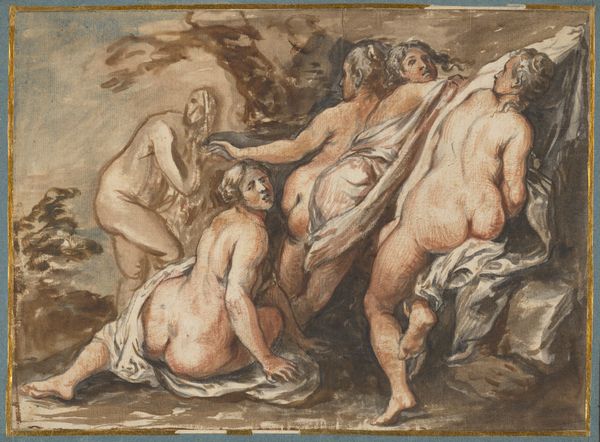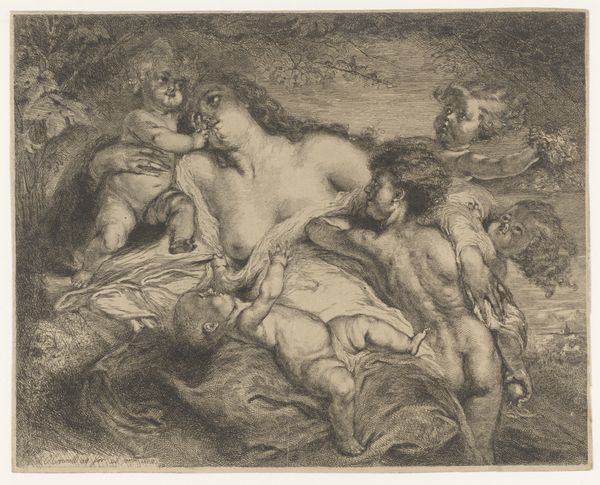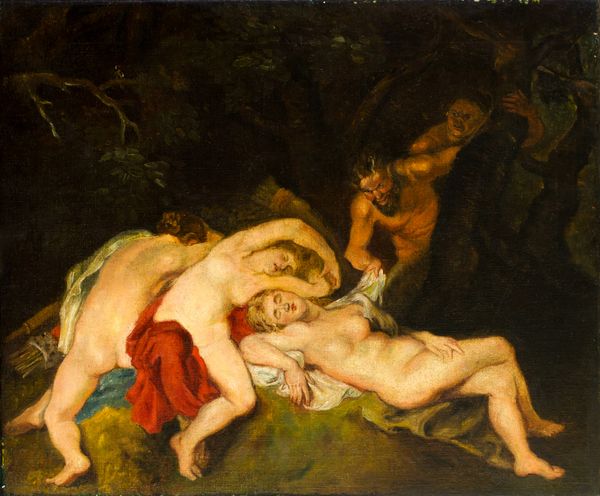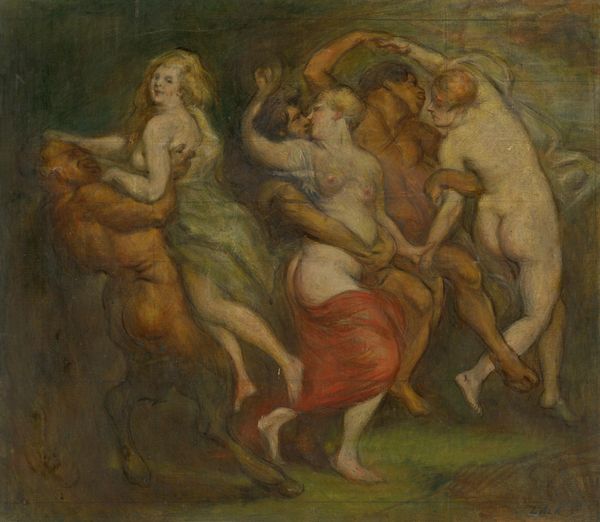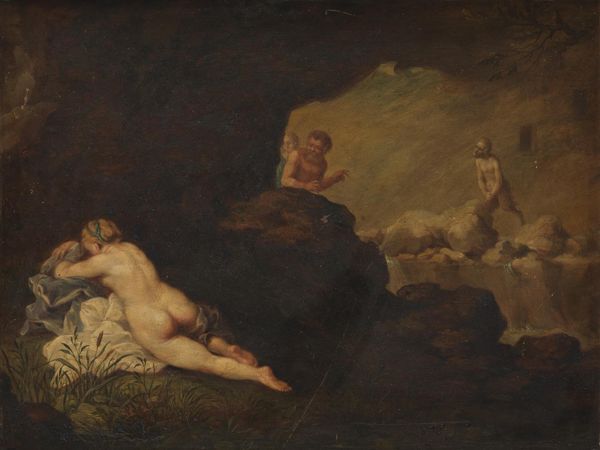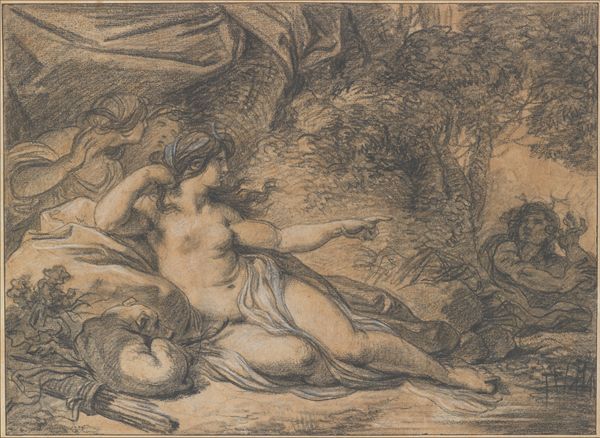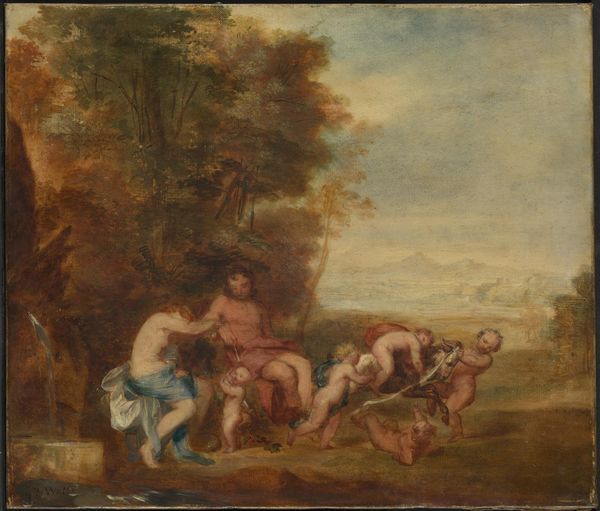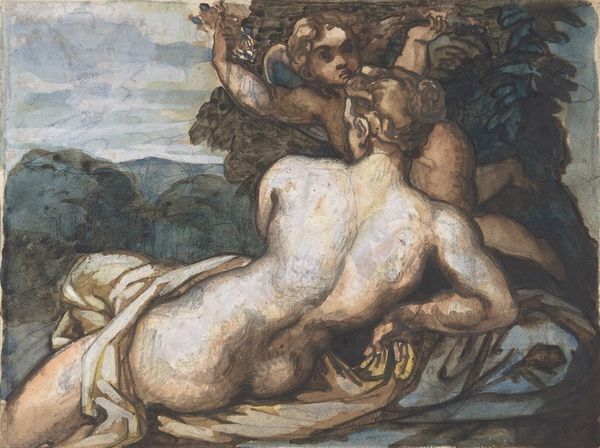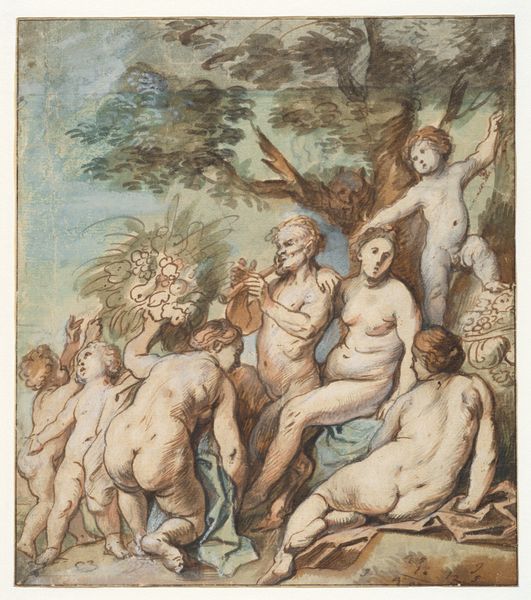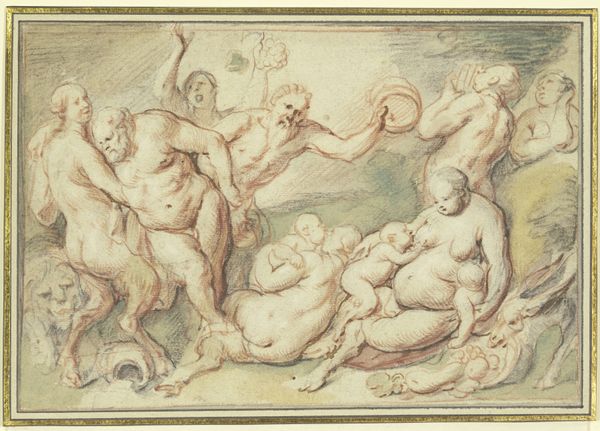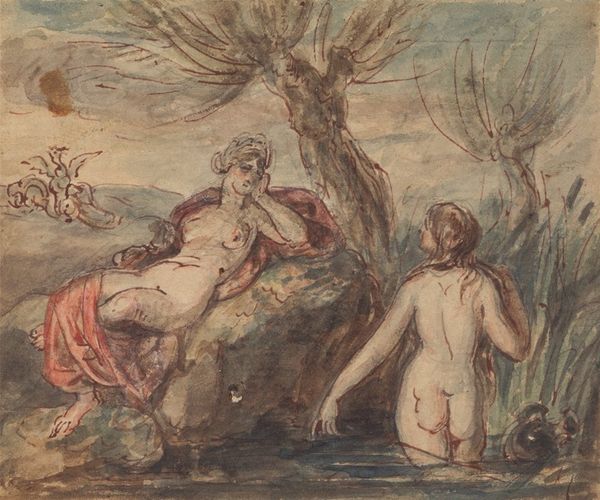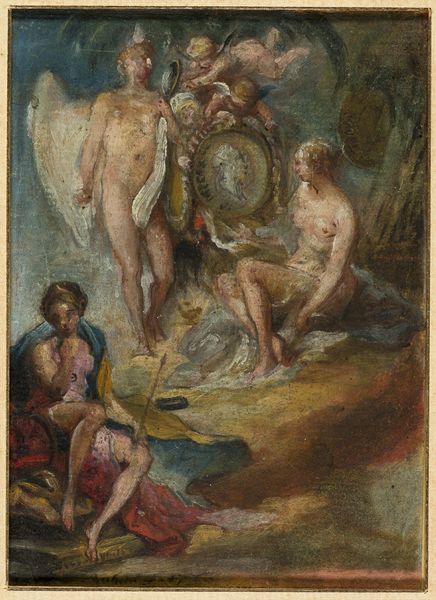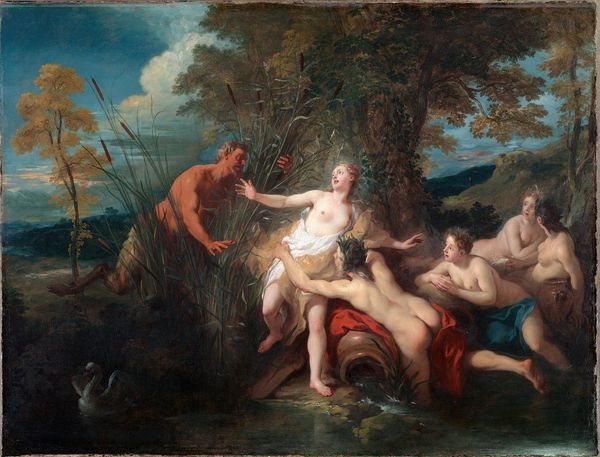
Nymphs and River God (Fragment of a Depiction of the Fall of Phaeton) c. 1640 - 1662
0:00
0:00
painting, oil-paint, oil
#
allegory
#
baroque
#
painting
#
oil-paint
#
oil
#
figuration
#
oil painting
#
history-painting
#
nude
Copyright: Public Domain
Editor: This is "Nymphs and River God (Fragment of a Depiction of the Fall of Phaeton)" by Peter Paul Rubens, made with oil paints sometime between 1640 and 1662. The scene feels really turbulent, almost like everyone's been caught in a sudden storm. How do you interpret this work? Curator: Well, looking at it through a contemporary lens, this fragment isn't just a depiction of mythological chaos. Consider the historical context. Rubens was working in a patriarchal society where the female body was often presented as either saintly or purely sensual. Note here how he's captured not just their vulnerability in the face of disaster, but also their anguish and physical strength. What strikes you about the river god in relation to these figures? Editor: He seems almost passive, as if overwhelmed by the unfolding tragedy. His posture is very… defeated. Curator: Precisely. That passivity, positioned centrally, implicates patriarchal structures – perhaps even suggesting their inability to protect or prevent catastrophe. The nymphs' distress can be read as a visual representation of the consequences when power structures fail those they are meant to serve, especially women. The "Fall of Phaeton" wasn't just about a reckless boy; it was about unchecked power, right? Editor: I never thought of it that way. It’s so interesting to think about the broader social implications. It moves beyond just the mythological story and speaks to power dynamics. Curator: Exactly! The rich color palette of the Baroque, often linked to opulence and control, clashes here with the evident turmoil and nakedness. The women are in a natural state of exposure – emotional and physical. What could that communicate about the constructed expectations placed upon women during this era? Editor: That makes me wonder if Ruben's work highlights how social roles imposed in society may not shield you when facing serious issues like environmental disasters. Thank you, that changed how I will look at similar artworks from now on. Curator: My pleasure. It is important to constantly challenge art, but always remain sensitive to original contexts.
Comments
No comments
Be the first to comment and join the conversation on the ultimate creative platform.
